
Milan: Italy's Fashion and Cultural Hub
Discover Milan: Italy's fashion and cultural powerhouse where historical charm meets modern innovation. Explore world-class art, cuisine, shopping, and vibrant local life.
Milan is a city that seamlessly blends its rich historical heritage with contemporary modernity. As you wander through its streets, you'll encounter stunning architecture ranging from the Gothic spires of the Duomo di Milano to the sleek skyscrapers of the Porta Nuova district. The city's vibrant atmosphere is palpable, with bustling cafes, luxury boutiques, and world-class museums at every turn. Milan is not just a fashion capital but also a treasure trove of art and culture. The city is home to Leonardo da Vinci's masterpiece, The Last Supper, housed in the Convent of Santa Maria delle Grazie. Art enthusiasts will find themselves mesmerized by the extensive collections in the Pinacoteca di Brera and the Museo del Novecento. The city's theaters, including the renowned La Scala, offer unforgettable performances that cater to both classical and contemporary tastes. For those seeking a taste of Milanese cuisine, the city offers a delectable array of dining options. From traditional trattorias serving risotto alla Milanese and osso buco to Michelin-starred restaurants pushing the boundaries of Italian gastronomy, there's something to satisfy every palate. After a day of exploring, unwind with an aperitivo in the Navigli district, where you can enjoy a cocktail by the canals as the sun sets. Shopping in Milan is an experience in itself. The city's Quadrilatero della Moda is a haven for fashion enthusiasts, featuring flagship stores of the world's most prestigious designers. Whether you're looking for haute couture, unique vintage finds, or artisanal crafts, Milan's shopping districts have it all. Beyond fashion, the city's markets, such as the Mercato di Via Fauche, offer a chance to delve into local life and pick up some fresh produce or handmade goods. Milan's public transportation system makes it easy to navigate the city and its surroundings. With efficient metro, tram, and bus services, you can effortlessly explore the city's diverse neighborhoods and even take day trips to nearby destinations like Lake Como or the Franciacorta wine region. Milan's central location also makes it a convenient base for exploring other parts of Italy and Europe. Whether you're a history buff, a fashionista, a foodie, or an art lover, Milan has something to offer everyone. Its unique blend of old-world charm and cutting-edge innovation ensures that every visit is a memorable one.
Local tips in Milan
- Visit the Duomo early in the morning or late in the afternoon to avoid crowds and enjoy stunning views from the rooftop terrace.
- Reserve tickets in advance for The Last Supper as they often sell out quickly.
- Take advantage of Milan's aperitivo culture—restaurants and bars often offer free snacks with your evening drink.
- Use the ATM app for convenient and efficient public transportation navigation.
- Explore the Brera district for a mix of art galleries, charming streets, and excellent dining options.
- Don't miss the chance to take a day trip to Lake Como, just a short train ride from the city.
- Check out the local markets for unique souvenirs and a taste of everyday Milanese life.
- Visit during Milan Fashion Week for an unparalleled experience, but book accommodations well in advance.
Neighbourhoods in Milan
Milan: Italy's Fashion and Cultural Hub
Milan is a city that seamlessly blends its rich historical heritage with contemporary modernity. As you wander through its streets, you'll encounter stunning architecture ranging from the Gothic spires of the Duomo di Milano to the sleek skyscrapers of the Porta Nuova district. The city's vibrant atmosphere is palpable, with bustling cafes, luxury boutiques, and world-class museums at every turn. Milan is not just a fashion capital but also a treasure trove of art and culture. The city is home to Leonardo da Vinci's masterpiece, The Last Supper, housed in the Convent of Santa Maria delle Grazie. Art enthusiasts will find themselves mesmerized by the extensive collections in the Pinacoteca di Brera and the Museo del Novecento. The city's theaters, including the renowned La Scala, offer unforgettable performances that cater to both classical and contemporary tastes. For those seeking a taste of Milanese cuisine, the city offers a delectable array of dining options. From traditional trattorias serving risotto alla Milanese and osso buco to Michelin-starred restaurants pushing the boundaries of Italian gastronomy, there's something to satisfy every palate. After a day of exploring, unwind with an aperitivo in the Navigli district, where you can enjoy a cocktail by the canals as the sun sets. Shopping in Milan is an experience in itself. The city's Quadrilatero della Moda is a haven for fashion enthusiasts, featuring flagship stores of the world's most prestigious designers. Whether you're looking for haute couture, unique vintage finds, or artisanal crafts, Milan's shopping districts have it all. Beyond fashion, the city's markets, such as the Mercato di Via Fauche, offer a chance to delve into local life and pick up some fresh produce or handmade goods. Milan's public transportation system makes it easy to navigate the city and its surroundings. With efficient metro, tram, and bus services, you can effortlessly explore the city's diverse neighborhoods and even take day trips to nearby destinations like Lake Como or the Franciacorta wine region. Milan's central location also makes it a convenient base for exploring other parts of Italy and Europe. Whether you're a history buff, a fashionista, a foodie, or an art lover, Milan has something to offer everyone. Its unique blend of old-world charm and cutting-edge innovation ensures that every visit is a memorable one.
When is the best time to go to Milan?
Iconic landmarks you can’t miss
Duomo di Milano
Discover the awe-inspiring Duomo di Milano, a Gothic cathedral that showcases stunning architecture and offers breathtaking views of the city.
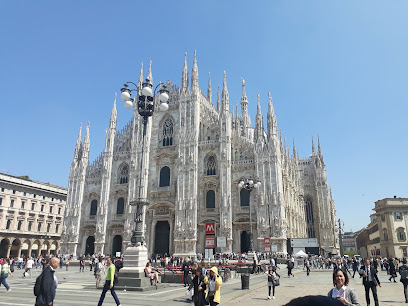
Galleria Vittorio Emanuele II
Explore Galleria Vittorio Emanuele II, Milan's stunning shopping gallery filled with luxury brands, exquisite architecture, and rich culture.
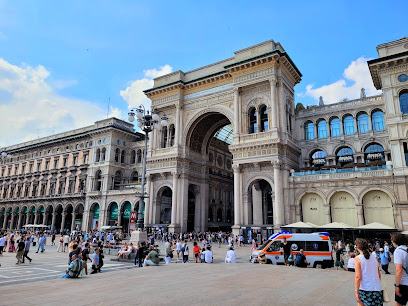
Parco Sempione
Experience the lush landscapes and cultural richness of Parco Sempione, Milan's urban park that promises tranquility and beauty.

Sforzesco Castle
Explore the grandeur of Sforzesco Castle, a historical landmark in Milan that offers a glimpse into the city's rich heritage and cultural treasures.
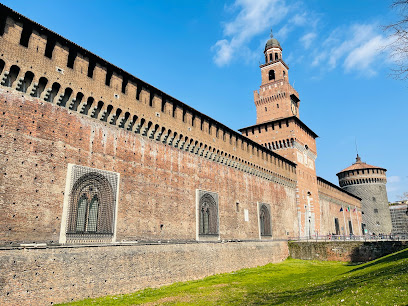
Piazza Gae Aulenti
Explore the vibrant Piazza Gae Aulenti, a contemporary urban square in Milan filled with stunning architecture, shops, cafes, and lively public art.
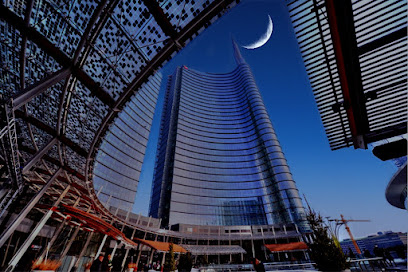
Arco della Pace
Discover the architectural beauty and historical significance of Arco della Pace, a remarkable triumphal arch in Milan's stunning Piazza Sempione.
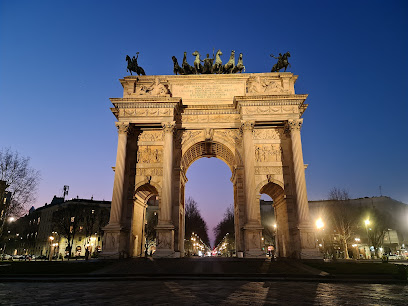
Indro Montanelli Gardens
Discover the lush serenity of Indro Montanelli Gardens, a tranquil escape in Milan's vibrant urban landscape, perfect for relaxation and exploration.
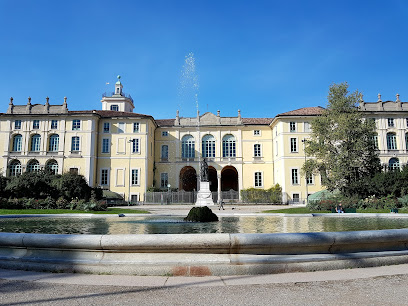
Palazzo Reale di Milano
Explore the rich artistic heritage of Milan at the magnificent Palazzo Reale, a historic palace turned art museum in the heart of the city.
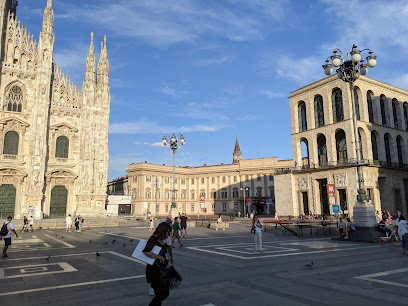
Santa Maria delle Grazie
Discover the rich heritage of Santa Maria delle Grazie, home to Da Vinci's 'The Last Supper', in the heart of Milan's cultural landscape.

Cathedral Square
Discover the breathtaking beauty and vibrant atmosphere of Cathedral Square, home to the iconic Milan Cathedral and a hub of Milanese culture.

Chiesa di San Maurizio al Monastero Maggiore
Explore the artistic and spiritual beauty of Chiesa di San Maurizio al Monastero Maggiore, a must-visit Catholic church in the heart of Milan, Italy.
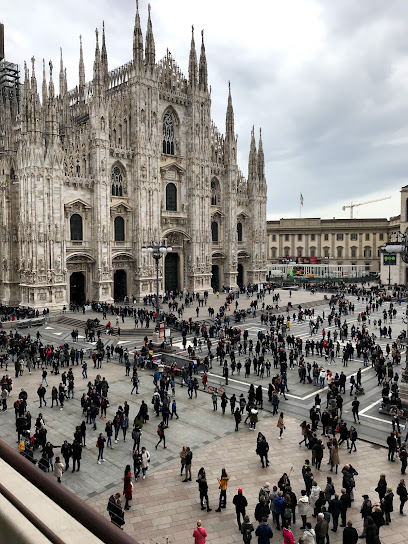
Piazza Mercanti
Discover the charm of Piazza Mercanti, Milan's historical landmark filled with stunning architecture and rich cultural heritage.
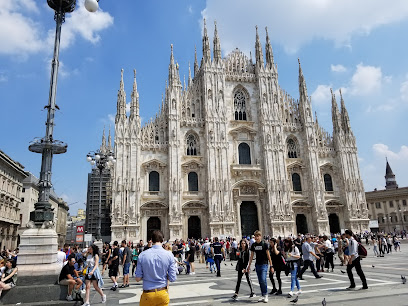
Chiesa di Santa Maria presso San Satiro
Explore the stunning Chiesa di Santa Maria presso San Satiro, a masterpiece of Renaissance architecture in the heart of Milan, Italy.
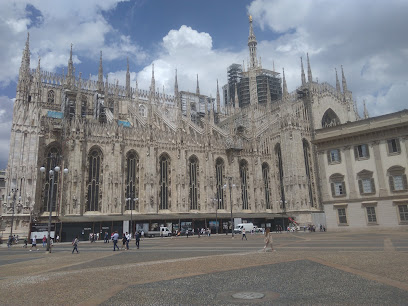
Chiaravalle Abbey
Explore the historic Chiaravalle Abbey in Milan, where stunning architecture meets tranquil spirituality and rich cultural heritage.
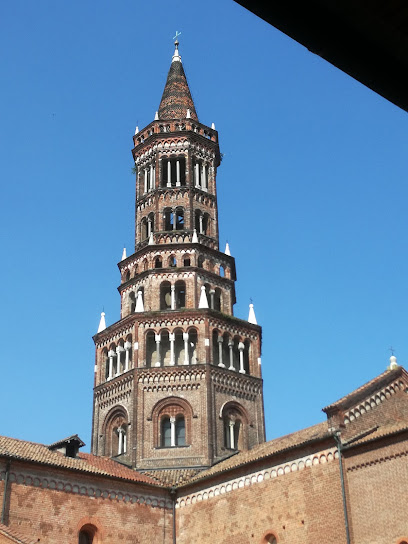
Piazza della Scala
Explore the iconic Piazza della Scala, a historical landmark in Milan, surrounded by art, culture, and exquisite architecture.
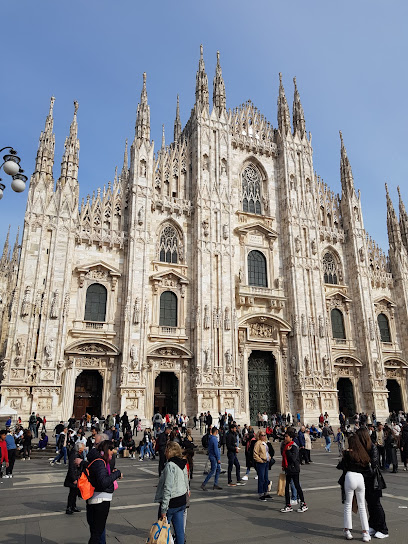
Unmissable attractions to see
Duomo di Milano
Experience the stunning architecture and rich history of Duomo di Milano, a Gothic cathedral and a symbol of Milan's cultural heritage.
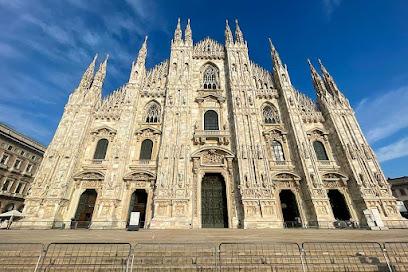
Galleria Vittorio Emanuele II
Explore the exquisite Galleria Vittorio Emanuele II in Milan, a historic shopping arcade blending luxury brands, dining, and stunning architecture.
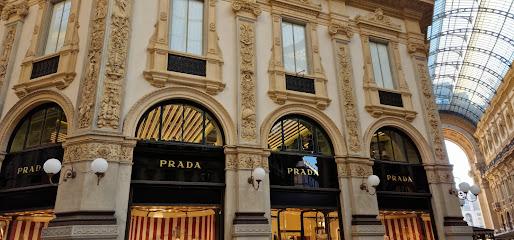
Sforzesco Castle
Explore the historic Sforzesco Castle in Milan, a magnificent fortress that showcases art, culture, and the city's rich heritage.
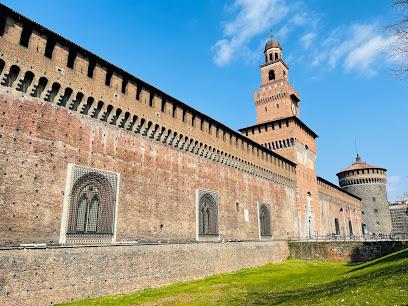
Parco Sempione
Discover the beauty of Parco Sempione, Milan's urban oasis featuring lush landscapes, historic architecture, and a vibrant atmosphere perfect for relaxation and exploration.
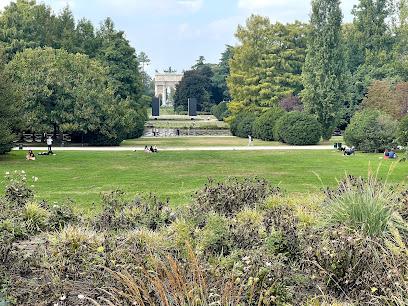
Teatro alla Scala
Discover the enchanting Teatro alla Scala, Milan's iconic opera house, where world-class performances and rich cultural heritage come alive.
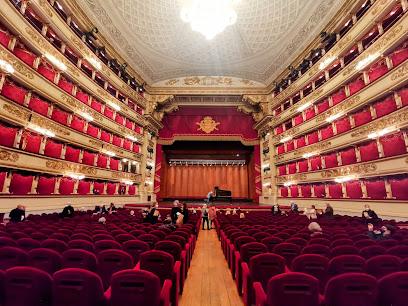
Pinacoteca di Brera
Discover the treasures of the Pinacoteca di Brera, Milan's premier art gallery, featuring masterpieces from the Renaissance to modern art.
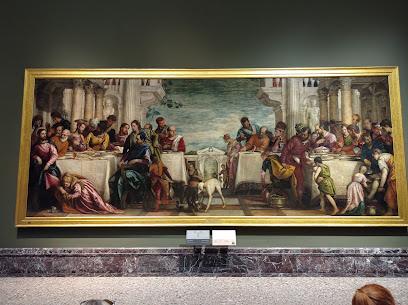
Leonardo da Vinci Museum of Science and Technology
Discover the marvels of science and technology at the Leonardo da Vinci Museum, where history meets innovation in the heart of Milan.

Palazzo Reale di Milano
Explore the rich artistic heritage of Milan at Palazzo Reale, a magnificent art museum showcasing timeless masterpieces and stunning architecture.
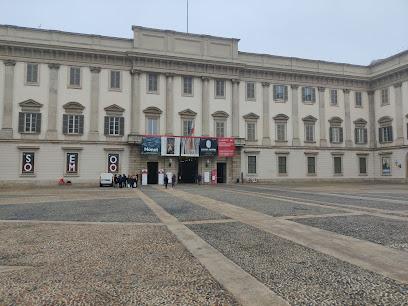
Cattedrale di Santa Maria Assunta - Duomo di Como
Explore the stunning Cattedrale di Santa Maria Assunta, a Gothic gem in Como, rich in history and breathtaking artistry.
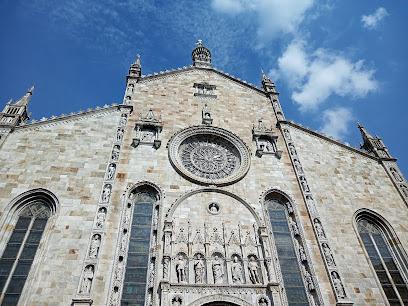
Naviglio Grande
Discover the beauty and cultural richness of Naviglio Grande, a historic canal in Milan, perfect for leisurely strolls, dining, and artistic exploration.
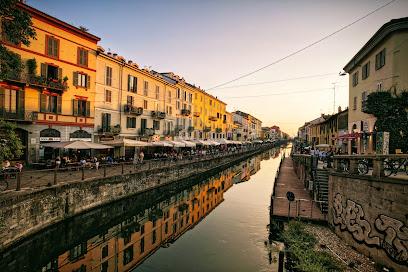
Basilica di Santa Maria delle Grazie
Discover the breathtaking Basilica di Santa Maria delle Grazie, a UNESCO World Heritage site in Milan, home to Leonardo da Vinci's iconic Last Supper.

Basilica of Sant'Ambrogio
Explore the Basilica of Sant'Ambrogio in Milan, a Romanesque masterpiece steeped in history and spirituality, showcasing stunning mosaics and serene ambiance.
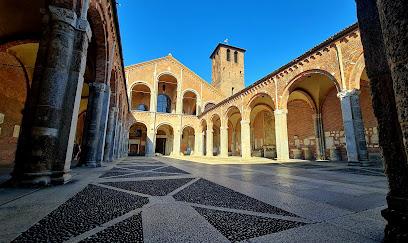
Ponte Coperto
Experience the charm of Ponte Coperto, a historic bridge in Pavia that offers stunning views and a glimpse into Italy's rich architectural heritage.
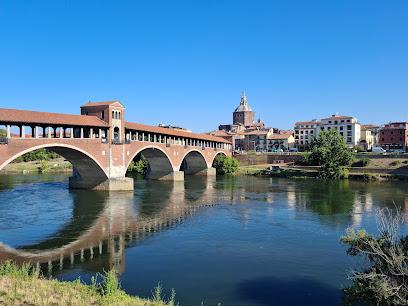
Alfa Romeo Museum
Discover the legacy of Alfa Romeo at its stunning museum in Arese, showcasing iconic cars and the evolution of automotive excellence.

Leonardo's Last Supper Museum
Discover the iconic Last Supper by Leonardo da Vinci at this must-visit museum in the heart of Milan, a masterpiece of Renaissance art and history.
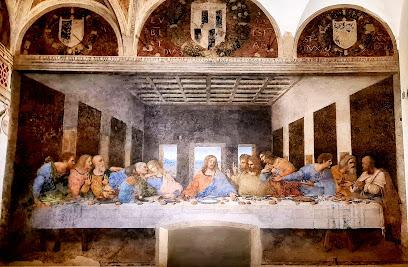
Essential places to dine
Eataly Milano Smeraldo
Experience authentic Italian cuisine at Eataly Milano Smeraldo – where food lovers gather to indulge in culinary delights and enrich their palates.

Ristorante Galleria
Indulge in authentic Italian flavors at Ristorante Galleria, nestled in Milan's iconic shopping gallery with exquisite pizzas and elegant ambiance.
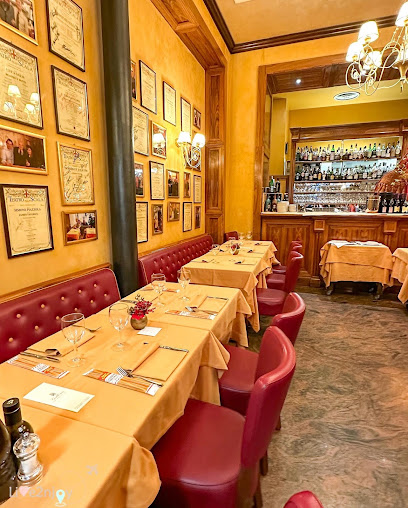
Ribot Restaurant
Experience authentic Italian cuisine at Ribot Restaurant in Milan – where every dish tells a story.
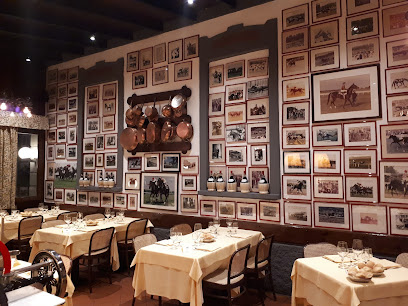
Cracco
Experience the pinnacle of fine dining at Cracco in Milan - where tradition meets innovation in every exquisite dish.
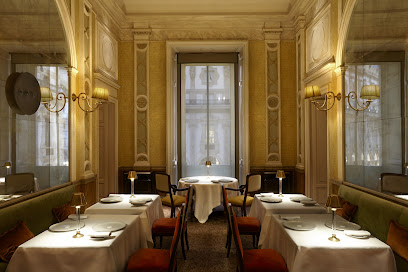
Alessandro Borghese - Il lusso della semplicità
Experience the essence of Italian fine dining at Alessandro Borghese - Il lusso della semplicità in Milan.
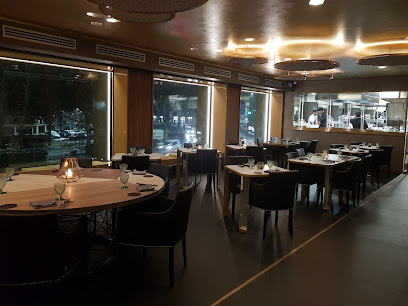
L'immagine Bistrot Ristorante
Experience authentic Italian cuisine at L'immagine Bistrot Ristorante in Milan - where flavor meets tradition in every dish.
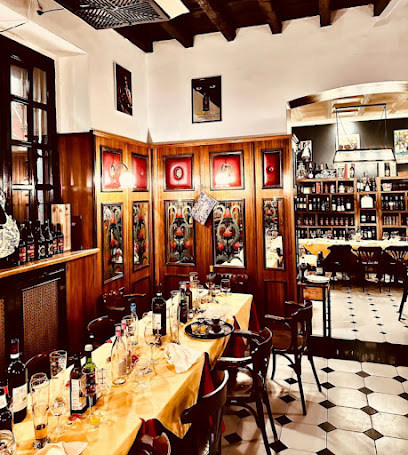
Ratanà
Experience exquisite Italian cuisine at Ratanà, where tradition meets innovation in the heart of Milan.
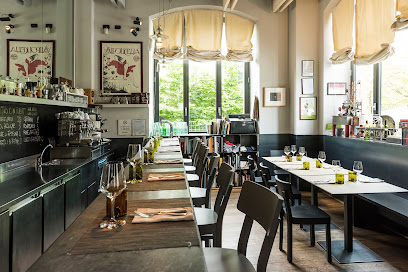
Risoelatte
Discover the authentic taste of Lombardy at Risoelatte, where traditional Italian cuisine meets a cozy dining atmosphere in Milan.
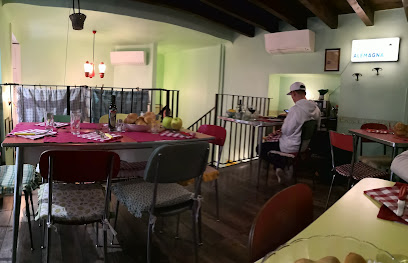
Rossini Ristorante Pizzeria
Experience authentic Italian cuisine at Rossini Ristorante Pizzeria in Milan—delicious wood-fired pizzas and traditional dishes await!
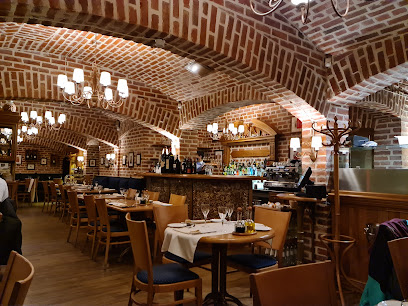
La Gioia
Discover authentic Italian cuisine at La Gioia - where every meal is a masterpiece crafted with passion and precision.
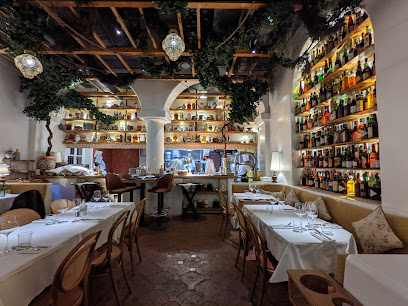
Ristorante Nabucco
Discover authentic Italian flavors at Ristorante Nabucco in Milan - where culinary artistry meets elegant dining.
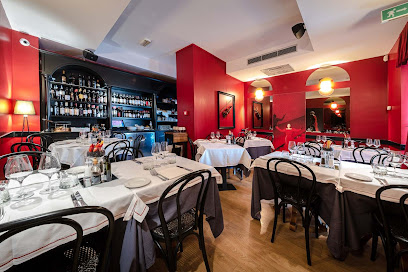
Trattoria Trippa
Discover authentic Italian cuisine at Trattoria Trippa in Milan—where tradition meets flavor in every dish.
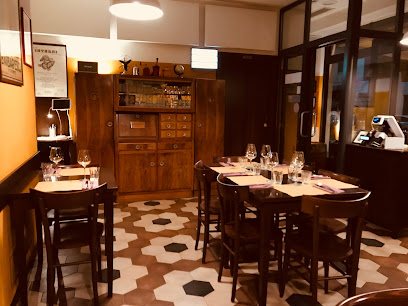
Paper Moon Giardino
Indulge in authentic Italian flavors at Paper Moon Giardino in Milan – where tradition meets elegance in every dish.
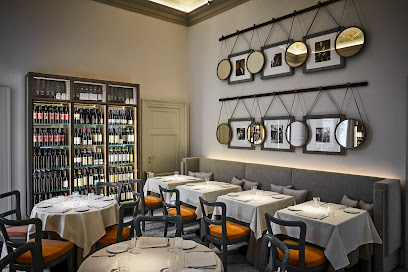
Primè
Discover Primè: An exquisite seafood restaurant in Milan offering gluten-free options and authentic Italian flavors.
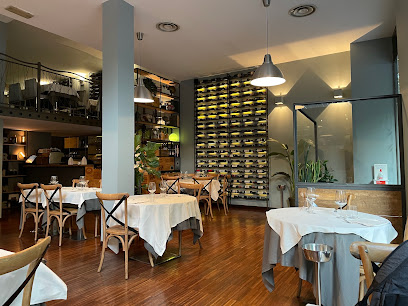
Valentino Legend
Discover authentic Italian flavors at Valentino Legend in Milan – where every dish tells a story.
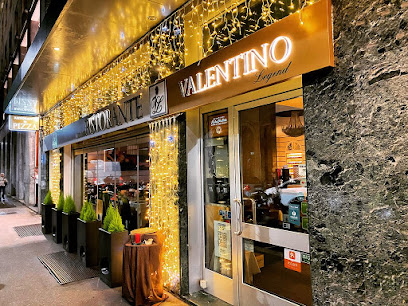
Markets, malls and hidden boutiques
Rinascente Milano
Discover luxury shopping, gourmet dining, and stunning views at Rinascente Milano, the ultimate shopping destination in Milan's vibrant city center.
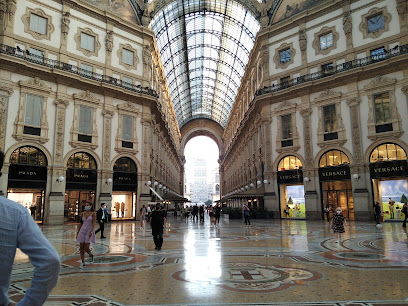
Flying Tiger Copenhagen
Explore Flying Tiger Copenhagen in Milan for quirky gifts and unique finds that embody fun and creativity for every traveler.

LOUIS VUITTON La Rinascente Milan Duomo Store
Experience the pinnacle of luxury shopping at Louis Vuitton La Rinascente Milan Duomo, where fashion meets exquisite craftsmanship.
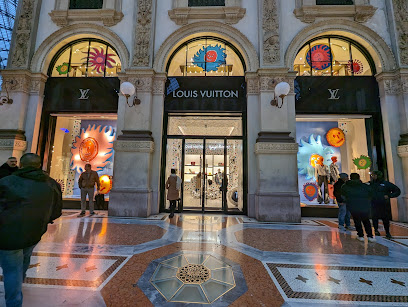
Quadrilatero d'Oro
Explore the Quadrilatero d'Oro, Milan's prestigious shopping district for luxury fashion and exquisite craftsmanship.
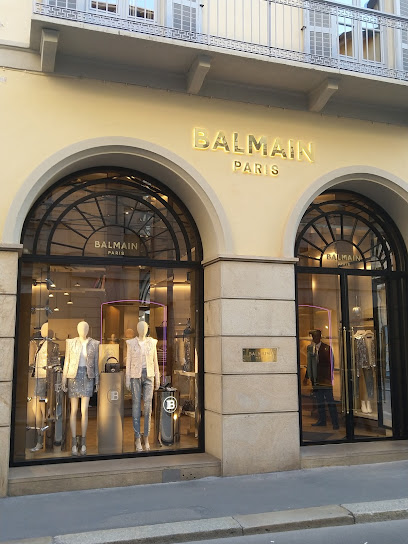
DMAG outlet
Discover unbeatable fashion deals at the DMAG Outlet in Milan, where style meets affordability in a vibrant shopping atmosphere.
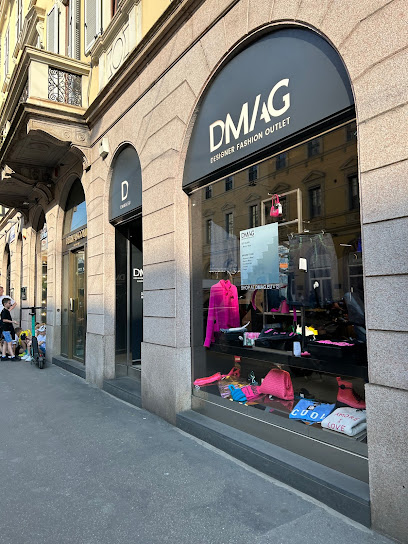
Louis Vuitton Milano Galleria Vittorio Emanuele II
Explore luxury at Louis Vuitton in the stunning Galleria Vittorio Emanuele II, where fashion meets artistry in a breathtaking shopping experience.
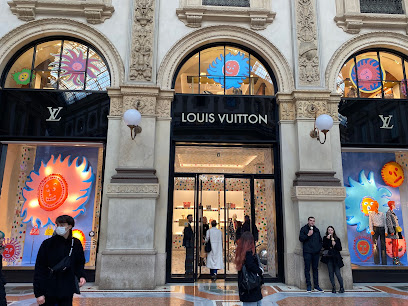
Stone Island Store Milano
Discover high-end menswear at Stone Island Store Milano, where innovative design meets contemporary fashion in the heart of Milan.
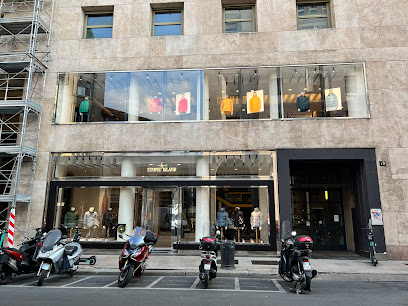
Milan Leo Souvenirs
Discover authentic Italian souvenirs at Milan Leo Souvenirs, nestled in the serene Parco Sempione, near Castello Sforzesco.

Antonia
Explore Antonia in Milan, a boutique that redefines luxury shopping with its exquisite collection of men's and women's fashion and accessories.
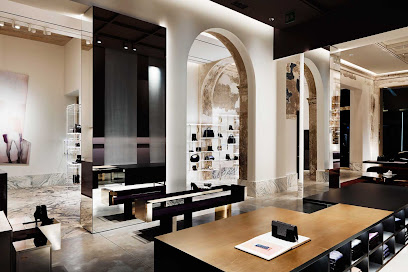
Off-White Milan
Immerse yourself in the world of Off-White Milan, where streetwear meets high fashion in a vibrant shopping experience.
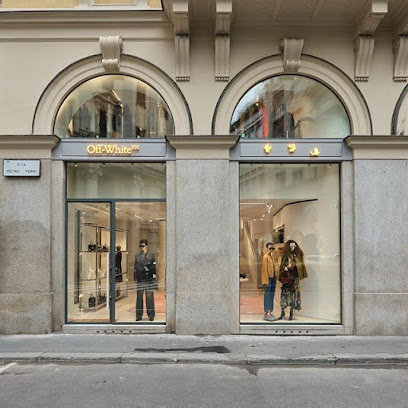
Bottega Veneta Milano Montenapoleone
Immerse yourself in luxury at Bottega Veneta Milano Montenapoleone, where Italian craftsmanship meets high-end fashion in Milan's prime shopping district.
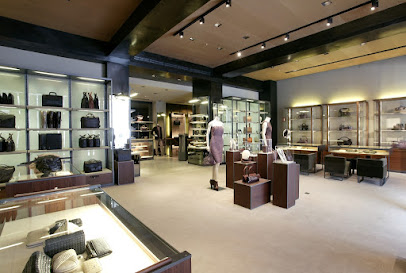
Wait and See Srl
Explore unique fashion at Wait and See Srl in Milan, where exclusive clothing and accessories meet the heart of Italian style.
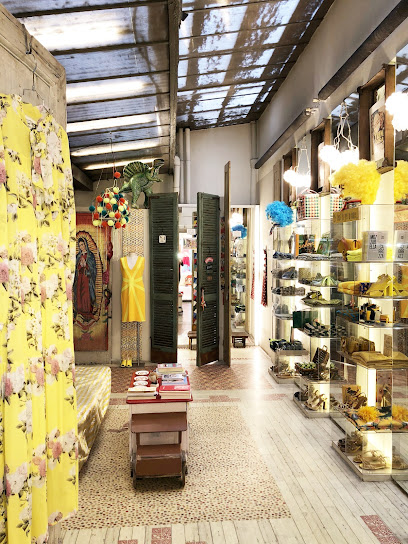
Cavalli e Nastri Brera
Discover unique vintage treasures at Cavalli e Nastri Brera, a must-visit fashion haven in the heart of Milan, Italy.
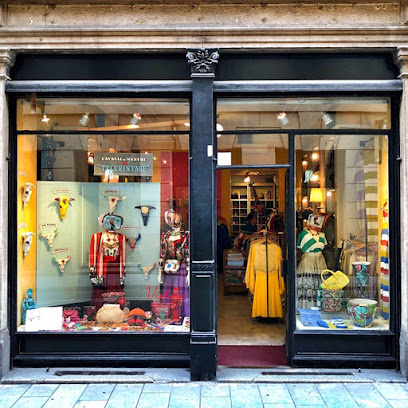
Cavalli e Nastri Mora
Explore timeless elegance at Cavalli e Nastri Mora, Milan's premier vintage clothing store, offering luxurious fashion finds and unique accessories.
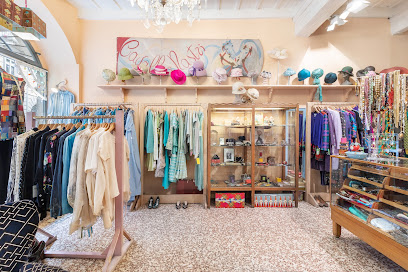
The Bridge Boutique Milano
Discover The Bridge Boutique Milano for exquisite leather goods and handbags, where Italian craftsmanship meets modern elegance.
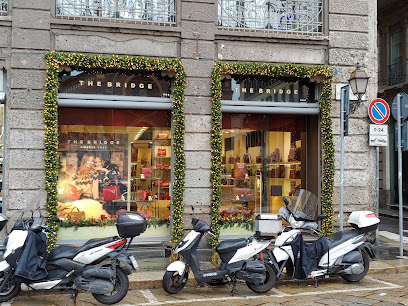
Essential bars & hidden hideouts
Nottingham Forest
Discover the magic of mixology at Nottingham Forest, Milan's top cocktail bar offering creative drinks in a vibrant atmosphere.
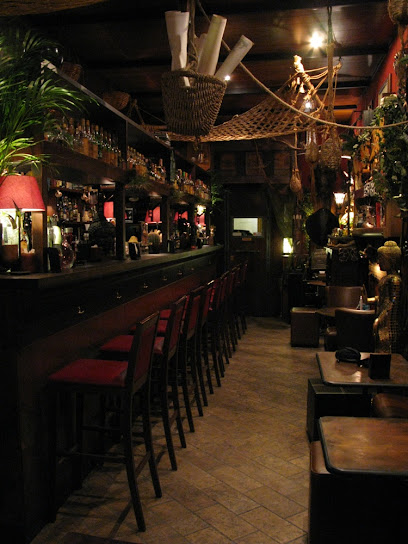
Bar Basso
Experience the vibrant atmosphere of Bar Basso, a renowned cocktail bar in Milan blending tradition and innovation for a memorable night out.
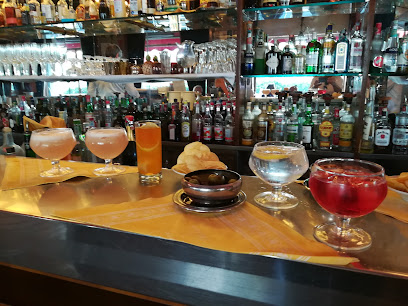
Moscow Mule Bar Milano
Discover the vibrant cocktail scene at Moscow Mule Bar Milano, where expertly crafted drinks meet a lively atmosphere for an unforgettable night out.
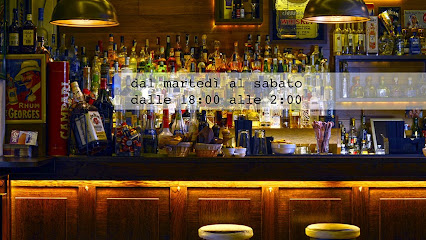
Pinch Spirits & Kitchen
Discover the ultimate cocktail experience at Pinch Spirits & Kitchen, where innovative drinks meet a lively atmosphere in the heart of Milan.
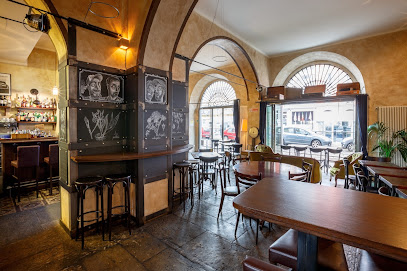
Kilburn Cocktail Bar Milano
Experience Milan's nightlife at Kilburn Cocktail Bar, where craft cocktails meet a vibrant atmosphere in the heart of the city.

Saloon of The Artists
Discover the vibrant Saloon of The Artists in Milan, where creativity and nightlife blend for an unforgettable pub experience.
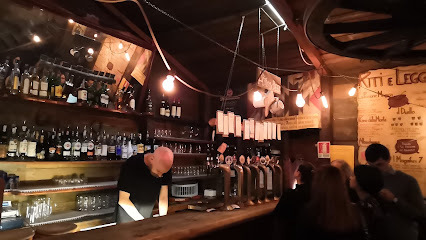
Vinyl Pub
Experience the vibrant nightlife of Milan at Vinyl Pub, where music and drinks blend to create unforgettable memories.
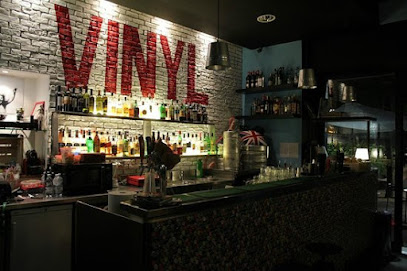
Wave Cocktail Bar
Experience the vibrant nightlife of Milan at Wave Cocktail Bar, where innovative cocktails and a chic atmosphere await every visitor.
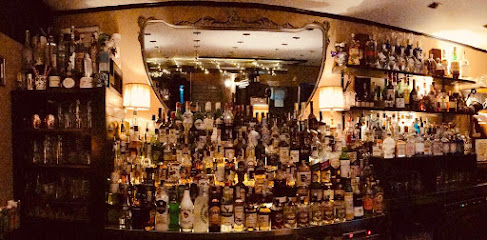
Monkey Cocktail Bar
Discover the vibrant Monkey Cocktail Bar in Milan, where expertly crafted cocktails meet lively ambiance for an unforgettable night out.
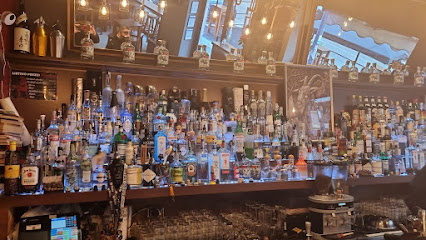
The Doping Bar
Experience the vibrant nightlife at The Doping Bar in Milan, where cocktails and dancing create unforgettable memories.
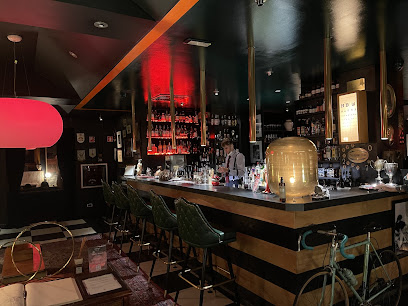
Cocktail Bar Mogamo
Experience the vibrant nightlife of Milan at Cocktail Bar Mogamo, where innovative cocktails and a lively atmosphere await every visitor.

Rufus Cocktail Bar
Experience the essence of Milan's nightlife at Rufus Cocktail Bar, where innovative cocktails meet a lively atmosphere for an unforgettable evening.
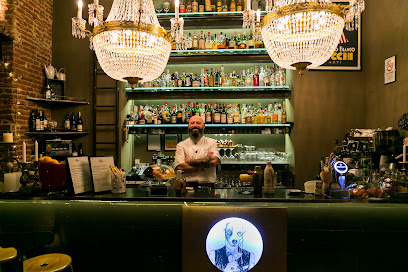
drinc. Cocktail & Conversation
Discover the vibrant cocktails and lively atmosphere at Drinc. Cocktail & Conversation, Milan's premier cocktail bar for unforgettable nights.

Raboucer
Experience the charm of Milan's nightlife at Raboucer, where exquisite cocktails and a vibrant atmosphere await.
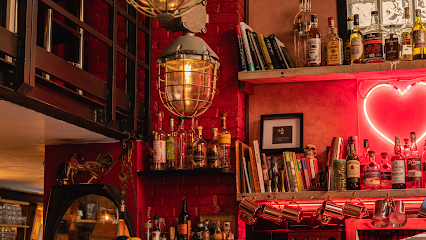
The Spirit
Experience Milan's vibrant nightlife at The Spirit, an upscale cocktail bar known for its exquisite drinks and lively atmosphere.
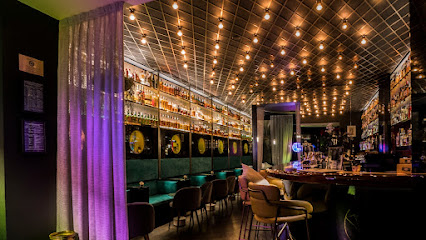
Local Phrases
-
- HelloCiao
[chow] - GoodbyeArrivederci
[ah-ree-veh-dehr-chee] - YesSì
[see] - NoNo
[noh] - Please/You're welcomePer favore/Prego
[pehr fah-voh-reh/preh-goh] - Thank youGrazie
[graht-zee-eh] - Excuse me/SorryScusa/Mi dispiace
[skoo-sah/mee dee-spyah-cheh] - How are you?Come stai?
[koh-meh stai] - Fine. And you?Bene. E tu?
[beh-neh. eh too] - Do you speak English?Parli inglese?
[pahr-lee een-gleh-zeh] - I don't understandNon capisco
[nohn kah-pee-skoh]
- HelloCiao
-
- I'd like to see the menu, pleaseVorrei vedere il menu, per favore
[vohr-ray veh-deh-reh eel meh-noo, pehr fah-voh-reh] - I don't eat meatNon mangio carne
[nohn mahn-joh kahr-neh] - Cheers!Salute!
[sah-loo-teh] - I would like to pay, pleaseVorrei pagare, per favore
[vohr-ray pah-gah-reh, pehr fah-voh-reh]
- I'd like to see the menu, pleaseVorrei vedere il menu, per favore
-
- Help!Aiuto!
[ah-yoo-toh] - Go away!Vai via!
[vah-ee vee-ah] - Call the Police!Chiama la Polizia!
[kyah-mah lah poh-lee-tsyah] - Call a doctor!Chiama un dottore!
[kyah-mah oon doh-toh-reh] - I'm lostMi sono perso
[mee soh-noh pehr-soh] - I'm illSto male
[stoh mah-leh]
- Help!Aiuto!
-
- I'd like to buy...Vorrei comprare...
[vohr-ray kohm-prah-reh] - I'm just lookingSto solo guardando
[stoh soh-loh gwar-dahn-doh] - How much is it?Quanto costa?
[kwahn-toh koh-stah] - That's too expensiveÈ troppo caro
[eh trohp-poh kah-roh] - Can you lower the price?Puoi abbassare il prezzo?
[pwoh-ee ahb-bahs-sah-reh eel preht-soh]
- I'd like to buy...Vorrei comprare...
-
- What time is it?Che ora è?
[keh o-rah eh] - It's one o'clockÈ l'una
[eh loo-nah] - Half past (10)Sono le dieci e mezza
[soh-noh leh dyeh-chee eh meh-tzah] - MorningMattina
[maht-tee-nah] - AfternoonPomeriggio
[poh-meh-reej-joh] - EveningSera
[seh-rah] - YesterdayIeri
[yeh-ree] - TodayOggi
[oh-jee] - TomorrowDomani
[doh-mah-nee] - 1Uno
[oo-noh] - 2Due
[doo-eh] - 3Tre
[treh] - 4Quattro
[kwah-troh] - 5Cinque
[cheen-kweh] - 6Sei
[say] - 7Sette
[seht-teh] - 8Otto
[oh-toh] - 9Nove
[noh-veh] - 10Dieci
[dyeh-chee]
- What time is it?Che ora è?
-
- Where's a/the...?Dov'è un/il...?
[doh-veh oon/eel] - What's the address?Qual è l'indirizzo?
[kwahl eh leen-dee-ree-tsoh] - Can you show me (on the map)?Puoi mostrarmi (sulla mappa)?
[pwoh-ee mohs-trar-mee (sool-lah mahp-pah)] - When's the next (bus)?Quando passa il prossimo (autobus)?
[kwahn-doh pahs-sah eel prohs-see-moh (ow-toh-boos)] - A ticket (to ....)Un biglietto (per ....)
[oon beel-lyet-toh (pehr)]
- Where's a/the...?Dov'è un/il...?
History of Milan
-
Milan, originally known as Mediolanum, was founded by the Insubres, a Celtic tribe, around 400 BC. It became a Roman colony in 222 BC after being conquered by the Roman Republic. The city rapidly grew under Roman rule, becoming a vital center of trade and culture in Northern Italy.
-
In the Middle Ages, Milan emerged as a powerful duchy under the Visconti family in the 14th century. The Viscontis expanded the city's influence through military conquests and strategic marriages. The Sforza family later succeeded the Viscontis, continuing to enhance Milan's political and economic power.
-
Milan became a hub of Renaissance culture during the 15th and 16th centuries. Under the patronage of Ludovico Sforza, the city attracted illustrious artists like Leonardo da Vinci, who painted 'The Last Supper' in the Convent of Santa Maria delle Grazie, and Bramante, who worked on the design of the iconic Church of Santa Maria presso San Satiro.
-
In the early 16th century, Milan came under Spanish control and later Austrian Habsburg rule. During this period, the city experienced both prosperity and hardship, including the devastating plague of 1630. Despite these challenges, Milan remained a significant cultural and economic center in Europe.
-
Napoleon Bonaparte's conquest of Italy led to the establishment of the Cisalpine Republic, with Milan as its capital, in 1797. The city became a focal point for revolutionary ideas and reforms. After Napoleon's fall, Milan was returned to Austrian control, but the seeds of Italian unification were already sown.
-
Milan played a crucial role in the Italian unification movement known as the Risorgimento. In 1848, the city witnessed the 'Five Days of Milan,' a popular uprising against Austrian rule. Following these events, Milan became part of the Kingdom of Italy in 1861, contributing significantly to the nation's industrial and cultural development.
-
Milan faced significant destruction during World War II due to Allied bombings. Post-war, the city underwent rapid reconstruction, emerging as an economic powerhouse and Italy's financial capital. This period also saw the birth of Milan's fashion industry, making the city a global fashion icon.
-
Today, Milan is known for its blend of historical and modern architecture, vibrant cultural scene, and status as a global fashion and design capital. The city's landmarks, such as the Duomo, La Scala opera house, and the modern Porta Nuova district, reflect its rich history and dynamic present.
Milan Essentials
-
Milan is well-connected by air, rail, and road. The main international airport is Malpensa Airport (MXP), located about 50 kilometers northwest of the city center. Linate Airport (LIN) is closer, about 7 kilometers from the city center, and caters mostly to domestic and short-haul international flights. Bergamo Orio al Serio Airport (BGY) is another option, located around 50 kilometers northeast of Milan, primarily serving budget airlines. Milan's central train station, Stazione Centrale, offers extensive rail connections to other Italian cities and European destinations. High-speed trains such as the Frecciarossa and Italo provide quick and efficient travel. For those driving, Milan is accessible via several major highways.
-
Milan has an efficient public transportation system including buses, trams, and a metro network operated by ATM (Azienda Trasporti Milanesi). The metro has four lines (M1, M2, M3, M5) that cover most of the city and its suburbs. Tickets are interchangeable across buses, trams, and metro and can be purchased at stations, newsstands, and via mobile apps. Taxis are widely available but can be expensive; ensure the meter is running or agree on a fare before starting your journey. Bike-sharing and electric scooters are also popular options for getting around. Walking is a great way to explore the central areas, especially the historic districts.
-
The official currency in Milan is the Euro (€). Credit and debit cards are widely accepted in hotels, restaurants, and shops. However, it's advisable to carry some cash for small purchases, especially in local markets or smaller establishments. ATMs are plentiful throughout the city, and many accept international cards. Currency exchange services are available at airports, major train stations, and throughout the city, though using ATMs often offers better exchange rates.
-
Milan is generally a safe city, but like any major metropolitan area, it’s wise to stay vigilant. Pickpocketing and bag snatching can occur, especially in crowded tourist areas like the Duomo, Galleria Vittorio Emanuele II, and public transportation hubs. Be cautious in neighborhoods such as Quarto Oggiaro and certain parts of Corvetto, which have higher crime rates. Avoid walking alone late at night in poorly lit or deserted areas. Always keep an eye on your belongings and be cautious of strangers offering help or asking for money.
-
In case of emergency, dial 112, the European emergency number, which connects you to police, fire, and medical services. Milan has several hospitals with emergency departments, such as Ospedale Maggiore Policlinico and Niguarda Hospital. Pharmacies (Farmacie) are abundant, with some offering 24-hour service. It's also wise to have travel insurance that covers medical emergencies. For minor health issues, pharmacies provide over-the-counter medications.
-
Fashion: Do dress stylishly, as Milan is one of the fashion capitals of the world. Avoid overly casual attire when dining out or visiting high-end areas. Religion: Do show respect when visiting churches and religious sites. Dress modestly, covering shoulders and knees. Public Transport: Do validate your ticket before boarding. Don’t eat or drink on public transport. Greetings: Do greet people with a 'Buongiorno' (Good morning) or 'Buonasera' (Good evening). A handshake is common in formal settings. Eating & Drinking: Do try local dishes and wines. Don’t ask for condiments like ketchup in authentic Italian restaurants; it's considered impolite.
-
To experience Milan like a local, visit the Navigli district for its vibrant nightlife and charming canals. Enjoy an aperitivo, a pre-dinner drink accompanied by small bites, at local bars. Explore the Brera district for its artistic vibe and quaint streets. The local markets, such as Mercato Centrale or Mercato di Via Fauche, offer a glimpse into everyday Milanese life. For a unique experience, take a stroll through the lesser-known neighborhoods like Isola or Porta Romana, which are rich in local culture and history.
Trending Landmark in Milan
-
Duomo di Milano
-
Galleria Vittorio Emanuele II
-
Parco Sempione
-
Sforzesco Castle
-
Piazza Gae Aulenti
-
Arco della Pace
-
Indro Montanelli Gardens
-
Palazzo Reale di Milano
-
Santa Maria delle Grazie
-
Cathedral Square
-
Chiesa di San Maurizio al Monastero Maggiore
-
Piazza Mercanti
-
Chiesa di Santa Maria presso San Satiro
-
Chiaravalle Abbey
-
Piazza della Scala
Nearby Cities to Milan
-
Things To Do in Bergamo
-
Things To Do in Lugano
-
Things To Do in Ascona
-
Things To Do in Locarno
-
Things To Do in Parma
-
Things To Do in Genoa
-
Things To Do in St. Moritz
-
Things To Do in Turin
-
Things To Do in Zermatt
-
Things To Do in Verona
-
Things To Do in Cinque Terre
-
Things To Do in Arosa
-
Things To Do in Grindelwald
-
Things To Do in Davos
-
Things To Do in Murren



















